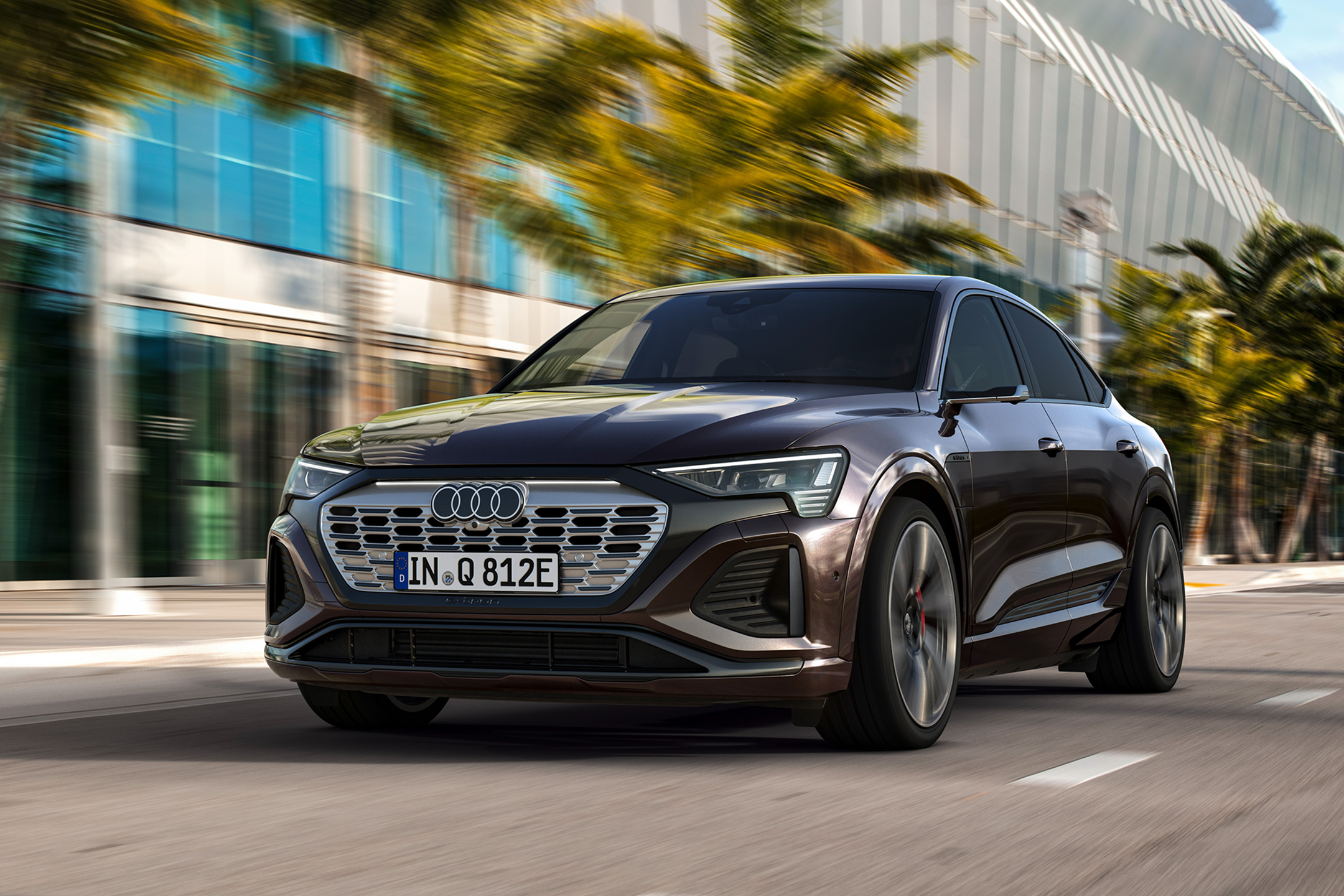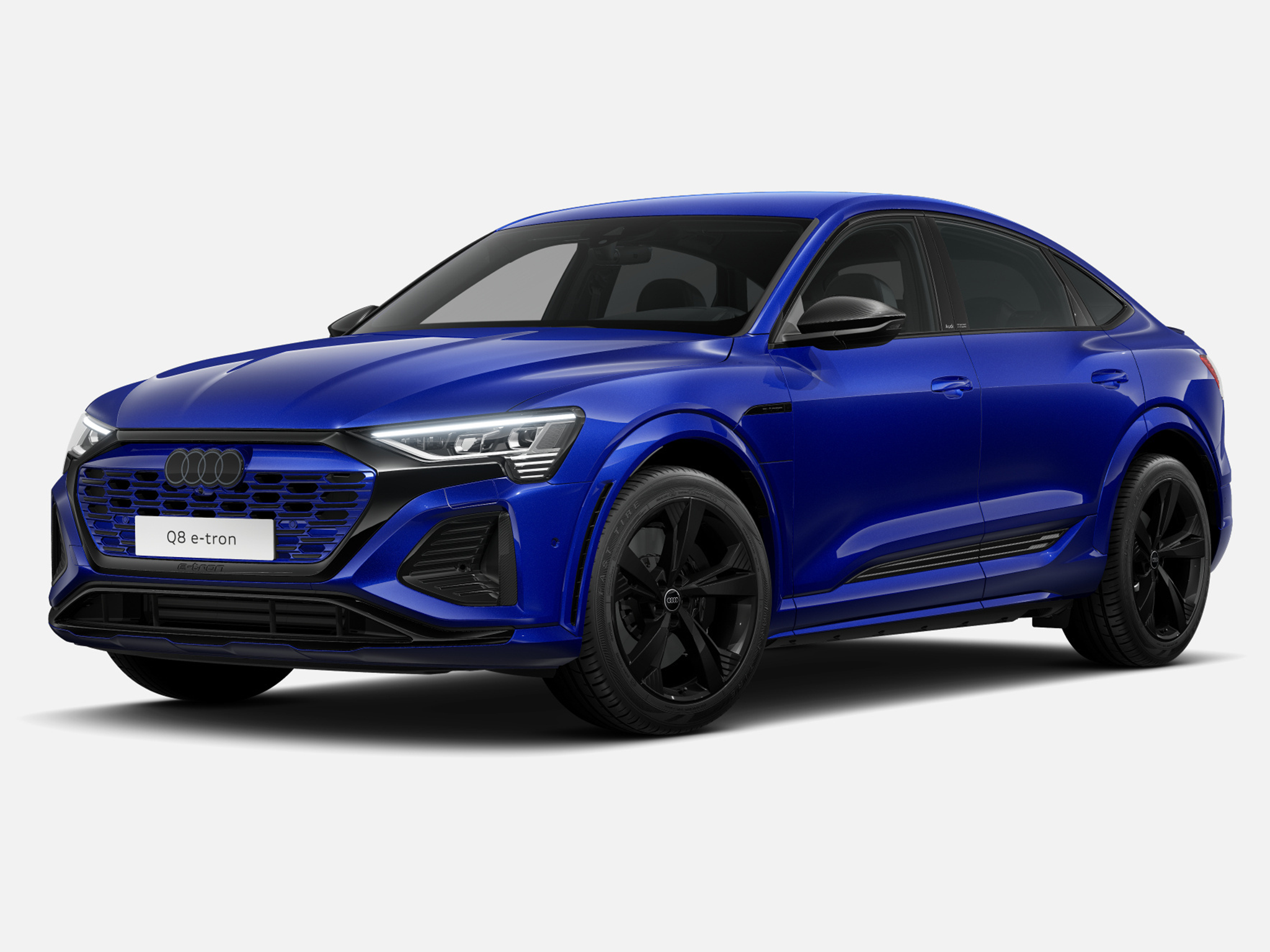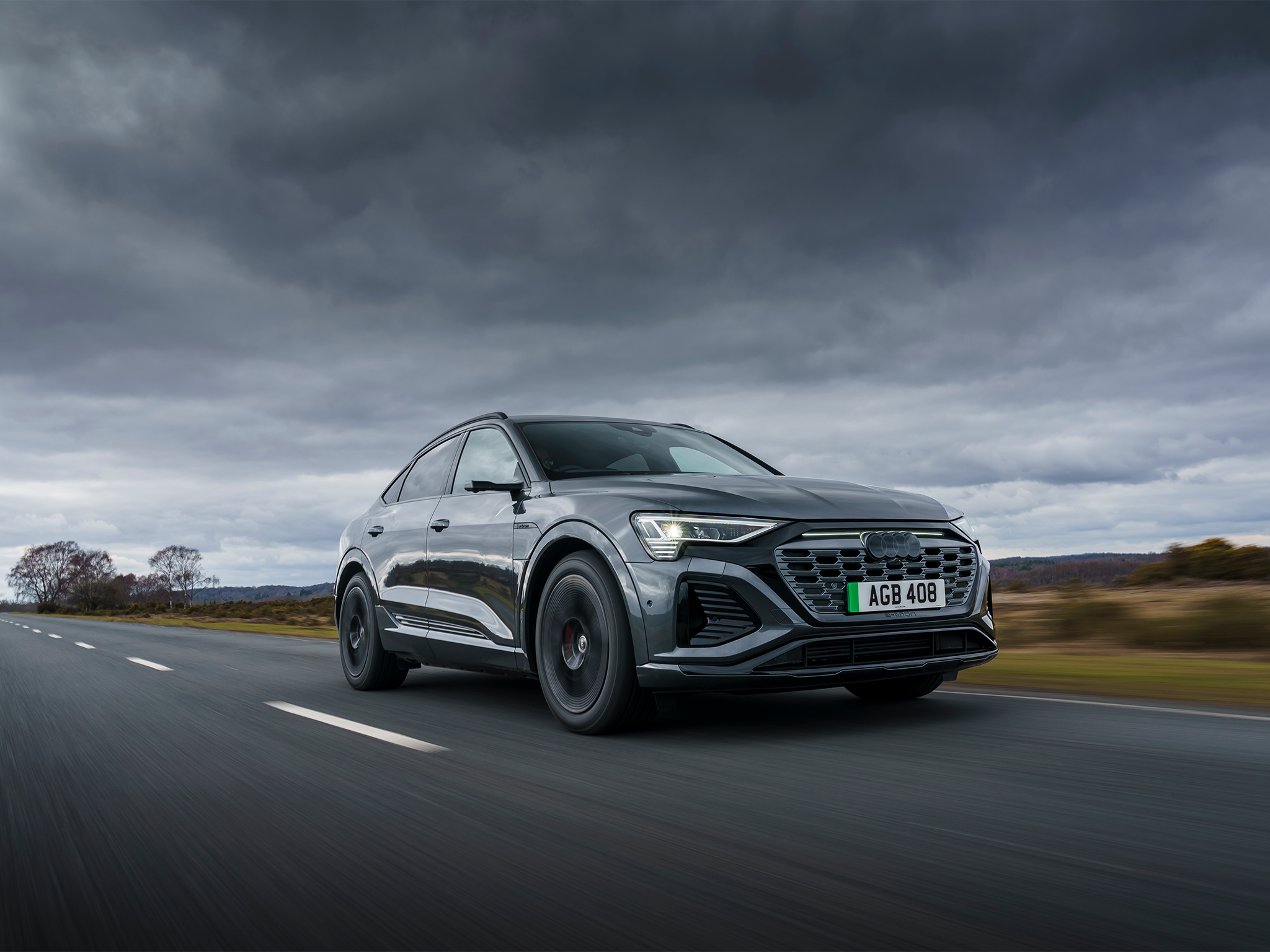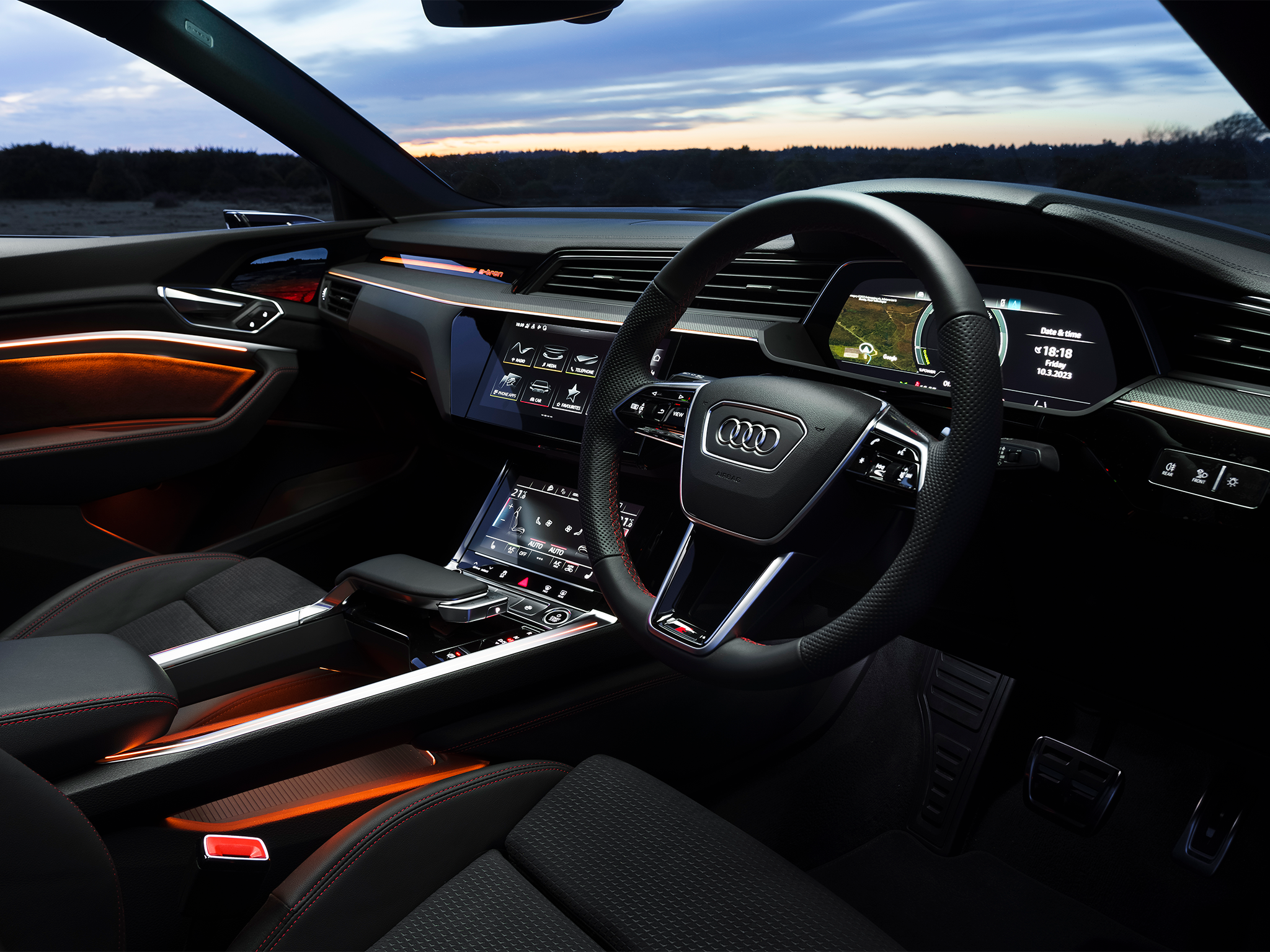Audi Q8 e-tron Sportback review: Luxury SUV falls short on efficiency
Audi's coupe-styled electric SUV delivers striking looks, a premium cabin and sophisticated driving dynamics, but is held back by high running costs

The Audi Q8 e-tron Sportback makes a bold statement, trading some of the standard Q8's practicality for a striking, coupe-inspired silhouette.
Inside there’s the unmistakably premium Audi solidity, complemented by some sophisticated digital interfaces (though the optional digital mirrors are best avoided). Despite its rakish roofline, rear passenger space remains commendable.
However, while substantial battery options are offered, its efficiency lags behind the latest EV benchmarks, meaning real-world range doesn't always match the battery capacity, which potentially means increased running costs. Still, with standard air suspension delivering a plush and precise drive, the Q8 Sportback remains a refined and desirable, if not entirely cutting-edge, luxury EV.
How we tested
To get a feel for the Q8 e-tron Sportback, I spent a day covering approximately 200 miles across the scenic Cotswolds. This wasn't just about admiring the scenery – the environment serves as an ideal proving ground for the car, with a network of challenging, winding roads testing the Q8 Sportback’s sophisticated chassis dynamics.
We assessed how the air suspension managed body control, paying attention to the precision of the steering and its overall agility when transitioning through flowing B-road corners. We also experienced it in typical village traffic and on faster A-roads.
Audi Q8 e-tron Sportback: From £74,010, Audi.co.uk

Independent rating: 7/10
Best for: Luxurious electric coupe SUV style
- Pros: Sleek looks, premium cabin, sophisticated to drive
- Cons: Expensive, poor efficiency, beaten by rivals for range
Audi Q8 e-tron Sportback specs
- Price range: £74,010 to £117,715
- Battery size: 95kWh or 114kWh
- Maximum claimed range: 343 miles
- Miles per kWh: 2.93
- Maximum charging rate: 150-170kW
Battery, range, charging, performance and drive
The Audi Q8 e-tron Sportback offers a choice of two batteries, both of which are larger than the previous Audi e-tron. The core choice has a total capacity of 95kWh, while the extended range battery has a total capacity of 114kWh. Note, the usable capacity of both batteries will be less than these quoted figures.
Range depends on which trim you choose. Posher trims have larger wheels which eat away at the range. An entry-level 95kWh Q8 e-tron Sportback has a range of 292 miles, with the 50 Quattro drivetrain giving 0-62mph in 6.0 seconds. It can use DC rapid chargers at a speed of up to 150kW, to charge from 10 per cent to 80 per cent in 28 minutes.
The alternative 114kWh battery, with the more powerful 55 Quattro setup, has a 343 mile range and 0-62mph in 5.6 seconds It has a slightly faster DC rapid charge speed of 170kW. This means that although the battery is bigger, it still charges from 10 per cent to 80 per cent in 31 minutes.
You can also get a wild SQ8 Quattro 114kWh, with loads of power and 0-62mph in 4.5 seconds, but the range drops again to just 269 miles. As it also costs from over £100k, it wouldn’t be our choice. The regular Audi Q8 Sportback drives perfectly nicely, with a smooth ride from its adaptive air suspension, and plenty of accurate confidence through the bends.
Interior, practicality and boot space
The Audi Q8 e-tron Sportback has a typically Teutonic feel inside, with lots of dark surfaces highlighted with bright metal trim. Build quality is exceptional, and it really feels made to last. The glossy-looking centre console comes to life when you turn it on, with dual touchscreen displays. There’s also ambient lighting built into much of the interior, so it feels welcoming at night.
Being a large SUV, the driving position is commanding, and the seat has a huge range of adjustment, helping you get comfortable. On sportier trims, the seats are firm and hip-hugging, so they’ll be good for long distances behind the wheel. Special mention also for the huge gearshifter, which doubles up as a hand rest – it’s over the top, but a nice added extra.
The Audi Q8 e-tron Sportback may well have a coupe-like rear profile, but it still has plenty of space inside for five. The plentiful legroom and rear seat comfort of the regular models is still there, meaning the only trade is a little less headroom. Because of the reprofiled rear, the boot is actually larger than the regular Q8 e-tron, at 660 litres, and the huge rear hatch makes loading it easy.

Technology, stereo and infotainment
The sophisticated look to the Audi Q8 e-tron’s interior is matched by the technology built in, with a particularly futuristic centre console. The upper 10.1in and lower 8.6in screens replace virtually all the buttons inside, but using them isn’t as intimidating as it sounds, because they are logical and responsive. You even get haptic feedback, so they ‘click’ when you press them. There’s an additional widescreen display for the driver, that puts the sat nav centre stage for them.
Even the regular stereo performs well, thanks to the Q8 e-tron Sportback’s refinement, but the Bang & Olufsen 3D premium alternative will blow you away. It offers brilliant richness and clarity, particularly at higher speeds, when some other systems can seem washed out.
However, one piece of technology you can safely do without is the Audi Q8 e-tron’s digital door mirrors. These replace the regular door mirrors and, because they’re far smaller, make it slipperier through the air, which slightly improves range. But this feels first-generation technology and using them is far from intuitive – we’d rather spend the money on the B&O stereo instead.
Prices and running costs
Being a range-topping model the Audi Q8 e-tron Sportback has prices that reflect this. It starts from just over £74,000, which is around £2,500 more than the regular Audi Q8 e-tron. Audi does help soften the blow with finance offers, including some eye-watering deposit contributions if you choose a PCP scheme.
Although the range is broadly comparable, running costs will be higher than some of its rivals. That’s because the Audi Q8 e-tron Sportback is less efficient, meaning it uses more electricity to cover a set distance. However, if you charge at home, this will be less of an issue, as it’s still cheaper to run than a petrol-powered Audi Q8.
All Q8 e-tron Sportback customers can sign up for the Audi Charging Service. This gives access to one of the largest public charging networks across Europe, and also gives lower prices through a choice of three tariffs, called Basic, Plus and Pro. High-mileage drivers could see significant savings with the Pro level.
Insurance will be expensive, as almost every model falls into the top group 50 rating. However, as this is a well-proven model by now, reliability should be robust.

Audi Q8 e-tron Sportback rivals
- BMW iX – The Q8 e-tron Sportback offers more conventional Audi luxury and a sleeker coupe profile.
- Mercedes-Benz EQE SUV – The EQE SUV emphasizes plush comfort, whereas the Q8 e-tron Sportback blends its tech with more traditional Audi solidity.
- Tesla Model X – The Model X boasts headline-grabbing performance contrasting with the Q8 e-tron Sportback's more understated European luxury.
FAQs
What should I look out for before buying?
Be aware of its relatively poor energy efficiency, which impacts real-world range despite large batteries, and absolutely steer clear of the frustrating optional digital door mirrors.
How long does it take to charge?
A 170kW maximum charging rate means a 10-80 per cent top-up in around half an hour, or around 90 minutes at 50kW. A full charge on a home 7kW wall box is 18 hours.
How much does it cost – is it worth it?
The Q8 definitely looks better value at the £71,000 lower end than the £92,000 maximum, though you’ll need to find £10,000 for the bigger battery – some rivals are better value.
Does Audi replace batteries for free?
Like many rivals, Audi offers an eight year or 100,000-mile warranty on its batteries, which covers failures but also any drop in capacity below 70 per cent during that time.
Why trust us
Our team of motoring experts have decades of experience driving, reviewing and reporting on the latest EV cars, and our verdicts are reached with every kind of driver in mind. We thoroughly test drive every car we recommend, so you can be sure our verdicts are honest, unbiased and authentic.
The verdict: Audi Q8 e-tron Sportback
I found the digital side mirrors fitted to our car maddening, and the Q8 e-tron Sportback isn’t as entertaining to drive or as novel inside as some rivals, but it’s still easy to appreciate as an all-round package, thanks to the usual Audi qualities of a smart cabin and great refinement. Its size and weight really hits efficiency though – 240 real-world miles on more than 100kWh of battery capacity is a long way off the best.
Join our commenting forum
Join thought-provoking conversations, follow other Independent readers and see their replies
Comments







Bookmark popover
Removed from bookmarks